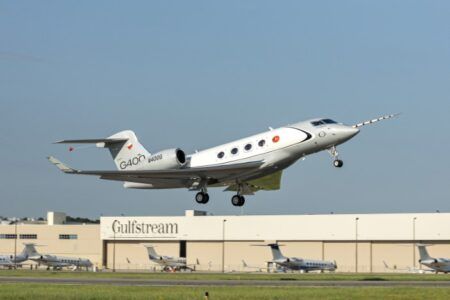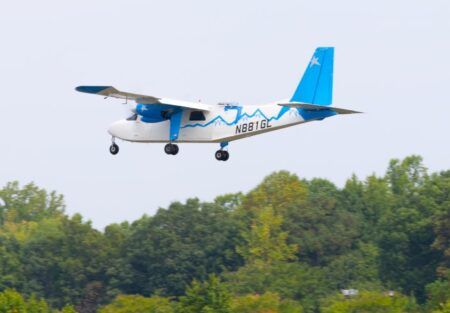When introducing a video about the Bombardier EcoJet program at a press conference held during the National Business Aviation Association’s Conference in Las Vegas, USA, in October Stephen McCullough, senior vice president, of engineering and product development from Bombardier enthused: “I expect some level of response to this because, honestly, if there’s not I’m in the wrong industry.”
Acknowledging the applause as the video faded and quipping “I can stay in the industry!”, McCullough revealed that he had been present at a secret North American location for the first flight of the Phase Two EcoJet. The technology, he said, is maturing fast but his assertion that it was creating a toolkit for developing a future aircraft was easily missed. Many observers left the room expressing doubts over how the EcoJet could ever become a production business aircraft. Such concerns miss the main aim of what Bombardier is doing.
The company first publicized the EcoJet program in May 2022 at EBACE (European Business Aviation Conference and Exhibition). The Canadian airframer had long kept the project out of public view and considerable progress had been made by the time it was revealed. During his 2023 update, McCullough explained that engineers had started working on ideas for EcoJet around 15 years ago, with the aim of halving aircraft emissions.
Bombardier aims to achieve that reduction through a combination of what McCullough describes as “amazing aerodynamics, propulsion and other technologies”, embodied in a blended wing body (BWB) concept.
“We see the blended wing body as a step change towards achieving our 50% goal and the aviation industry’s decarbonization goals by 2050,” says McCullough.
Years of theoretical research and wind tunnel trials preceded the Phase One test campaign that began in 2017 using a 7% scaled aircraft, or article, with an 8ft (2.4m) wing span. Phase Two is now underway using an 18ft (5.4m) -span article.
McCullough was present for the first flight. “It felt just like any other first flight. It followed the same processes with the same rigor and discipline,” he says.
The Phase Two article flies faster, higher and for longer providing an expanded opportunity to examine flight control laws and how they apply to its unconventional shape. “How it responds to surface input can be quite different from what we are used to and now we can use real data to optimize and configure for the next phase. Our approach is very clear and Phase Two will extend over several years, allowing the physics to lead us,” McCullough says.
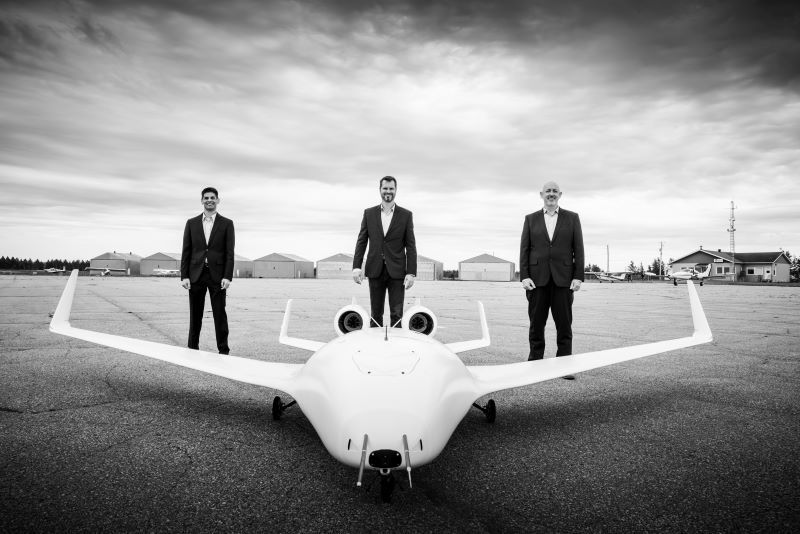
Why EcoJet?
Look back several decades and it was not uncommon for aircraft manufacturers to fly dedicated trials platforms, but in recent years it has generally been government research agencies or the military that have commissioned experimental platforms.
McCullough is clear on why Bombardier is flying EcoJet: “The drive to be leaders of sustainability makes us do things differently. While aerospace has been fantastic at becoming more efficient decade by decade, the bold promise we have made to sustainability,
and the technology we need to get there drives us in a different direction.”
With the EcoJet, Bombardier is taking a significant step away from verification and certification testing into pure R&D, presumably with a significant change of mindset. “Yes and no,” McCullough says. “If you look at Global 7500 flight testing for example, we were really considering flight validation. Over the past few years we’ve got very good at high-level integrated ground-based test rigs, all the way from desktop simulation through reconfigurable engineering flight simulators [REFS], iron birds, laboratories and our static testing.
“We’ve applied all of that to the EcoJet. We have tried not to short circuit that test philosophy, albeit in a faster cycle and allowing it to go outside the bounds of our norm. The flight test goes outside that norm, but we have put the article configurations in our REFS and all the way through to full article ground testing. We want to understand how the aircraft behaves in flight and how it behaves through the pyramid of testing.”
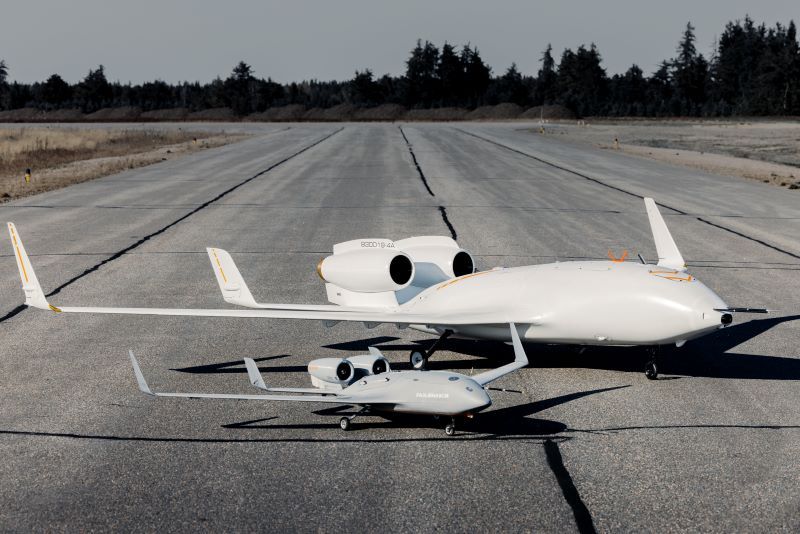
Significantly, the 18ft article is not the second flying EcoJet aircraft, rather the first iteration in the second phase of testing. McCullough confirms there were multiple Phase One articles, flying with slight variations around the same configuration and to the same scale. “In Phase Two, we typically have more than one flight test vehicle, as we would for a regular test program,” he continues.
If EcoJet trials are outside Bombardier’s regular operation, then so is its design and manufacture. Business jet OEMs generally build a handful of test airframes that are very close to production configuration, with the expectation of building many more for years to come. They do not build multiple iterations of small-scale research aircraft. The company has yet to go public with details of the process but highlights strong industry collaboration and university partnerships were key.
EcoJet journey
The journey to this point, he emphasizes, began around February 2008 and the robust approach to EcoJet testing means that for a research program, it has considerable maturity. Which in no way diminishes its achievements. McCullough continues: “With a very unconventional structure and flight control surfaces, there has been learning all the way through and we are still learning. The best way to look at the program is from the people and tools perspective.
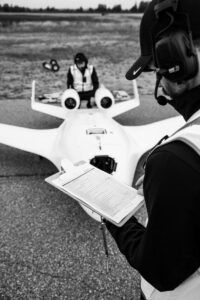
“It’s not about throwing something into the sky and seeing what it does.”
The liberty in the EcoJet program, the more experimental or research aspect, is founded on its small scale. Compared to a full-size aircraft, the articles are more easily modified and there have been multiple iterations in each test phase. Compared to a conventional trials and certification program, the EcoJet is delivering a wealth of data.
“Normally when you start a test program the specification is very clear. The drive at every stage is about complying with the specification for validation and certification,” says McCullogh.
“But a large part of EcoJet testing is about looking at the data and how that can make the next iteration even more efficient. We are looking at sizing equations we could apply to a full scale article, for example. This phase is more focused on creating a lot of new tools and methods as opposed to creating a specific end product.”
Phase Two had achieved little more than 20 hours of flight time by October 2023. Its real significance was in the vast amount of data gathered thanks to the aircraft’s comprehensive instrumentation fit. McCullough says, “We have now completed a little over ten sorties with the 18ft article, exploiting improvements in the technology in recent years to the point where we can control it and have high-resolution data coming from it.
“We are seeing advances that could allow future phases to be autonomous that will give us an amazing level of repeatability for test points, which becomes more important when you consider the scale factor.”
The aircraft is flown by a pilot, via a virtual reality headset or autonomously. Data is downloaded by telemetry to a mobile unit in a van. Telemetry provides clearance before the aircraft flies and declares if the data is good for each test point. The process is kept close to conventional flight testing so the tools and techniques developed can carry over and provide data at the level engineers use om certification programs.
A significant advantage of the Phase Two EcoJet over Phase One then, is endurance so test points can be repeated. “It has a considerably longer dwell time, a factor up on the 7ft article,” McCullough says. “That lets us go back and ensure we hit test points as well as extending sortie length to gather more data.”
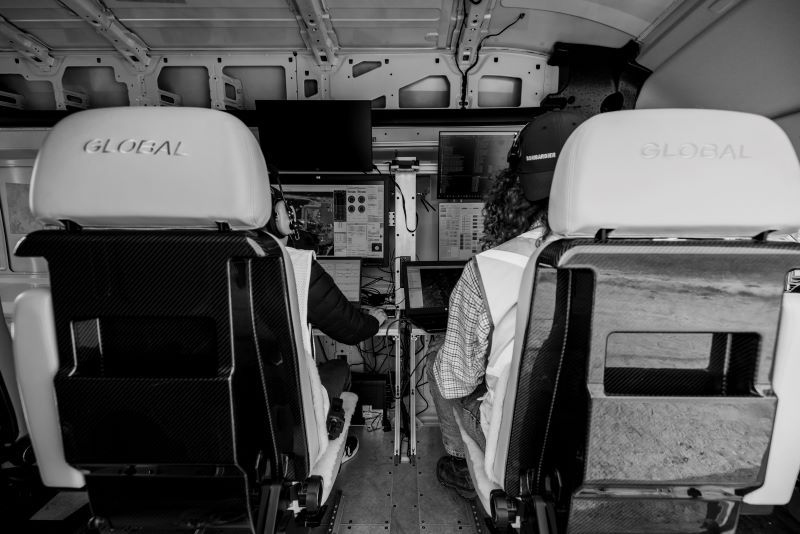
(Image: ©Guillaume Plisson for Bombardier)
The test plan has been carefully devised, but the small vehicle allows rapid changes in configuration and the test team is agile. “After each sortie we discuss lessons learned and data quality. Each flight test has a particular phase and one of those might, for example, be to open up the envelope for us to put our aircraft level control laws onboard once after completing a number of well-defined individual test points.”
Bombardier has referenced the secret location of the EcoJet flight trials more than once. Although he jokes that he was not blindfolded for the journey there, McCullough acknowledges that while the company has not been shy in talking about the program publicly, it is holding back data “that goes back into our design machine”.
“Bombardier has produced 30 products in 30 years and so our engineering system has lots of data from within the bounds of those products. With the supersonic test on the Global 7500 we added data from outside those boundaries and with the EcoJet we’re adding data from way beyond them,” says McCullogh.
Beyond Phase Two
Several options present themselves beyond Phase Two, potentially including a larger scale article. For now, McCullough is content to reveal that Bombardier is looking at internal configurations, how a pressurized business aircraft cabin might be built into the unusual volume encompassed by a BWB outline, for example.
Asked how long the EcoJet program will continue, McCullough provides an open-ended answer: “The purpose of this is research and technology development. We don’t want to limit the learning with a timescale.
“We’ve completed Phase One, giving us confidence to go into Phase Two. Instead of drawing up an exact timeline considering whether there is a larger scale aircraft and how it fits in, we’ve said we want the toolkit ready sometime this decade. We’ve a couple of milestones in sizing information that will probably take us several months to work through and we are making decisions based on the learning and the physics.
“It’s a lovely environment to work in. We can look at how it performed compared to what we have learned, and judge what more we can learn. It’s one of the huge advantages of doing it at subscale. Our ability to be adaptable on a wing configuration and get back airborne is an order of magnitude different to a full-scale aircraft.”
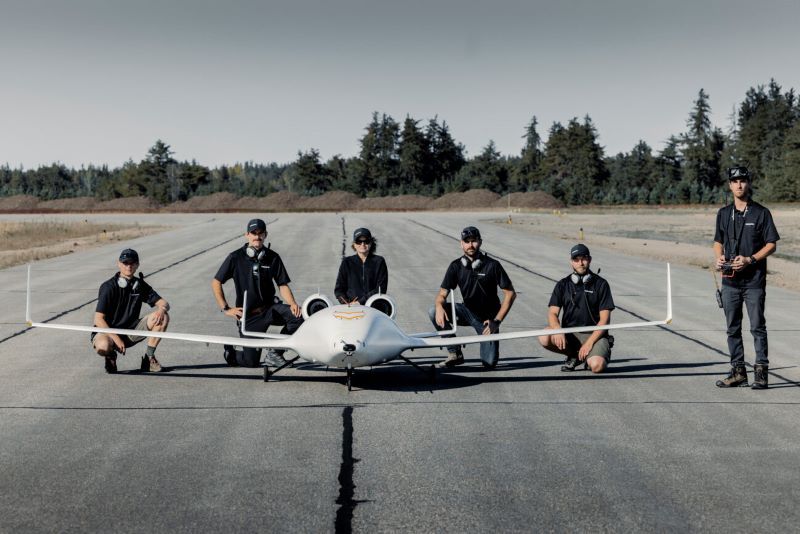
Meanwhile, ongoing EcoJet data analysis suggests that 20% of the BWB’s emissions savings will be from aerodynamics and a similar portion from propulsion, with the remaining 10% from other technologies, including weight saving engineering techniques and materials. Oddly, some of the advantages of the BWB confirmed in Bombardier’s testing have been acknowledged since the configuration emerged in the 1920s, so why only now is the company looking to exploit them?
McCullough says, “The physics tells us now is the right time. There’s a need to be different, more efficient. It’s all about the energy used going from A to B and it’s right to pursue a route that makes us 50% more efficient doing that.
“And there have been significant advances in enabling technologies over the past 20 or 30 years. The norm now is fly-by-wire, for example, through highly understood control laws. We have a better understanding of aeroelastic behaviour and structures and how you analyze, design and manufacture them.”
McCullough resolutely believes the BWB configuration will prove the correct direction for the future but sees the EcoJet’s value in creating the toolkit that will help and inform the next generation of Bombardier engineers.


